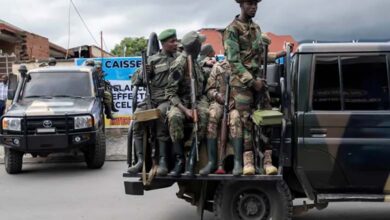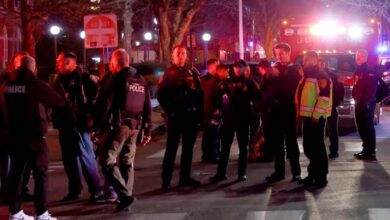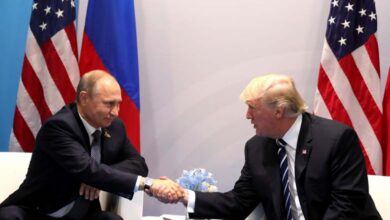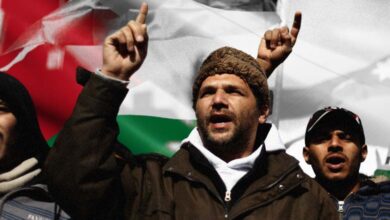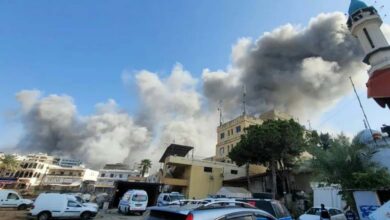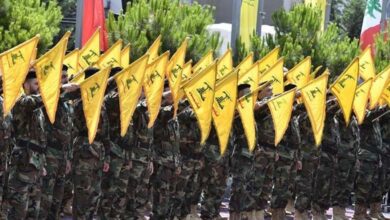Washington Post reveals how Lebanese pay the price for Iranian threats and ongoing Hezbollah-Israel clashes

For weeks, the Middle East has been on edge, anticipating an Iranian retaliatory strike on Israel that many fear could spark a full-scale war. While tensions remain high and Tehran signals it will wait for the right moment, daily violence continues to erupt along the Israeli-Lebanese border, according to the Washington Post.
-
Hezbollah Bets on Tunnel Warfare in Confrontation with Israel
-
Can Israel Deter Hezbollah? Dark Scenarios for a Potential Confrontation
Hezbollah Targets
The American newspaper reported that Israel targeted what it described as Hezbollah weapons caches along the border and in eastern Lebanon, reaching up to 50 miles inside the country. In response, Hezbollah launched deeper attacks into Israel, firing a wave of over 50 rockets and drones on Wednesday into the Israeli-occupied Golan Heights.
Israeli Defense Minister Yoav Gallant stated this week that the “center of gravity” of Israeli military operations is shifting from Gaza towards the Lebanese border. The recent strikes on alleged weapons stocks were “preparations for anything that might happen.”
-
New U.S. Sanctions Targeting Yemeni Houthis and Lebanese Hezbollah
-
Crisis Between Defense Minister and Army Chief Amid Heightened Tensions Between Hezbollah and Israel
Lebanese Disaster
In Lebanon, already crippled by political paralysis and a prolonged economic collapse, people feel trapped between the warring sides, fearing there is no escape. In the impoverished south, where Hezbollah holds significant influence and where attacks have been more intense, Syrian refugees have borne the brunt of the recent violence.
Israel and Hezbollah have been enemies for decades, fighting two costly and inconclusive wars. Hezbollah triggered the latest round of hostilities the day after Israel’s war on Gaza, launching strikes inside Israel in support of Hamas.
-
12 Hours of Chaos in Israel “Saved” Hezbollah from a Potential Strike
-
Israel avoids total war in response to Hezbollah
For over ten months, attacks and counter-attacks have displaced tens of thousands of civilians on both sides of the border. Each side has steadily expanded its range and sharpened its rhetoric while avoiding full confrontation. Analysts and officials, however, fear that this brinkmanship cannot last much longer.
Last month, a missile from Lebanon killed 12 children in a village in the Golan Heights. Israel and the U.S. blamed Hezbollah for the strike, but the militant group denied responsibility.
-
Hezbollah Focuses on Targeting Israeli Gas Fields
-
Know Hezbollah’s “Primitive” Tactics in Confronting Israeli Technology
In retaliation, the Israeli military assassinated Fouad Shokr, a senior Hezbollah commander close to the group’s leader Hassan Nasrallah. A day later, Hamas leader Ismail Haniyeh was killed in Tehran. Although Israel did not comment on the attack, it informed U.S. officials shortly afterward that it was responsible.
Regional Concerns
In the midst of these mutual threats, the Middle East holds its breath. In a speech earlier this month, Nasrallah said his fighters would respond “regardless of the consequences,” but added that keeping Israel waiting was “part of the punishment.”
-
Hezbollah Conceals Its Losses with Promotional Displays of the ‘Hudhud’ Drone
-
Israel and Hezbollah: Is Confrontation Inevitable?
While U.S.-backed efforts to revive ceasefire talks in Gaza seem to have affected the calculations of Iran and Hezbollah, they cannot indefinitely prevent escalation along the Israeli-Lebanese border, according to David Hale, who served as U.S. ambassador to Beirut from 2013 to 2015.
Hale stated, “There is certainly a feeling in Israel of being unable to return to the pre-October 7 status quo, where their opponents control the faucet, where the other side sets the pace.”
Without a clear diplomatic path to remove Hezbollah from the border, Israel is likely to expand its military operations.
-
Leaks from the Secret Meeting: Iran Refuses to Support Hezbollah and its Iraqi Militias Against Israel
-
Assassinated in a Night Raid on Southern Lebanon: Who is the Senior Hezbollah Military Leader Taleb Abdullah?
Targeting Civilians
On Saturday, an Israeli airstrike in the southern Lebanese city of Nabatiyeh killed 10 civilians, according to Lebanese authorities, marking the deadliest attack in the country since October.
The Israeli occupation forces described the building targeted as a “Hezbollah weapons storage facility.” They did not respond to requests for comment on civilian casualties.
The strike hit an industrial area on the outskirts of the city, a rundown zone where most workers are Syrians, many of whom are already refugees from war. They live as day laborers, sleeping where they work.
-
Dangerous Escalation: Hezbollah Targets Israeli Fighter Jets for the First Time Since the War Began
-
Hezbollah Faces Internal Dissent and Divisions
Hussein Tahmaz, the building’s owner, denied the presence of weapons, saying that construction materials were stored on the first floor while his workers stayed on the second. Nine of his employees were killed. Tahmaz emphasized he had no connection to Hezbollah or any other armed group.
Surveillance cameras revealed that the warehouse had no links to weapons. Workers at a neighboring site said the strike shook them from their beds, shattering windows and scattering debris across the roof.



